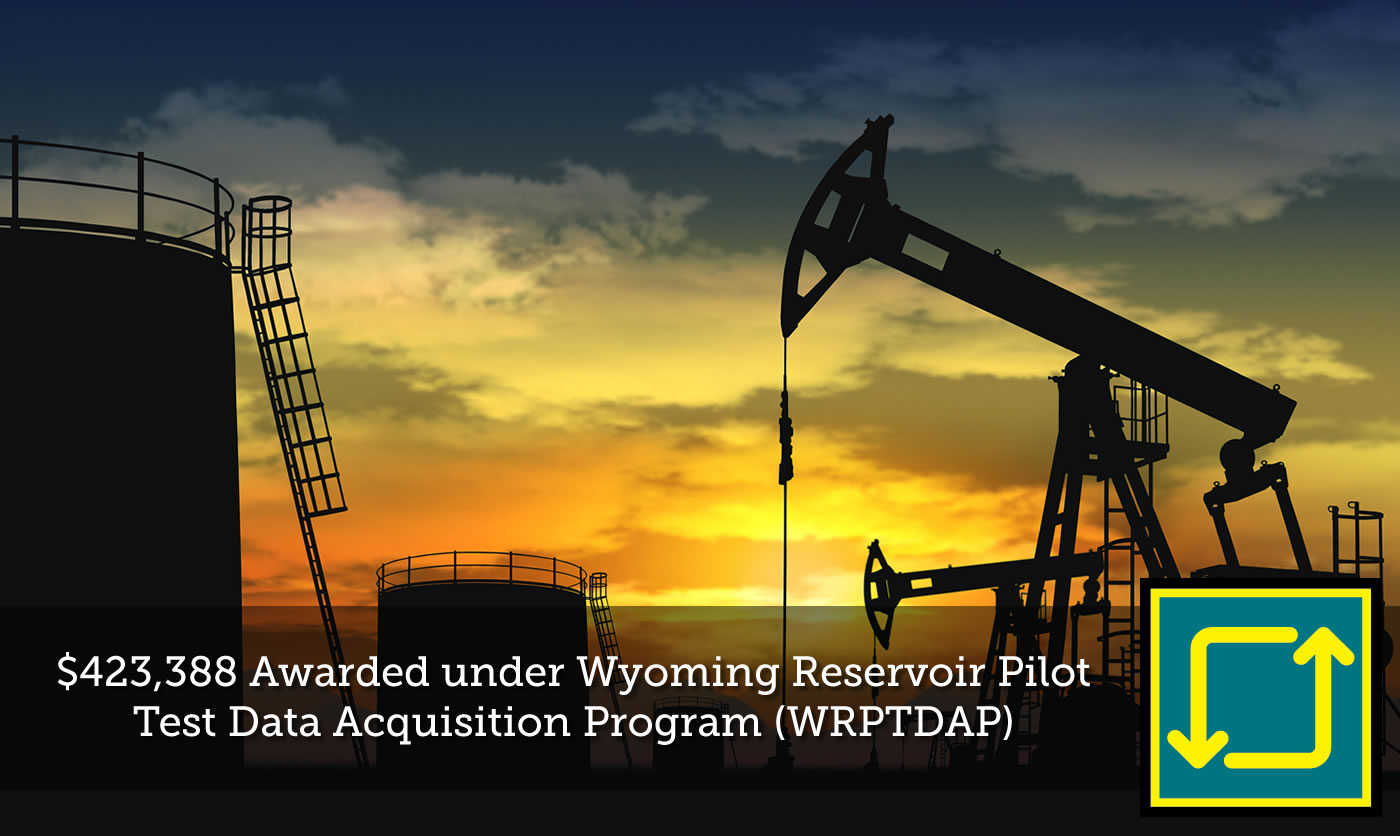The Enhanced Oil Recovery Institute (EORI) announce the initial awards under the program designed to acquire real world Wyoming reservoir operating data in partnership with various technology vendors and Wyoming operators.
Data collected from approved projects will be used by the Institute’s research, engineering and geology staff to analyze Wyoming reservoirs and technologies. The goal being to suggest improved, economic methods for recovering larger volumes of stranded oil and gas which is at the heart of the Institute’s mission and legislative mandate. The Enhanced Oil Recovery Institute (EORI) announce the initial awards under the program designed to acquire real world Wyoming reservoir operating data in partnership with various technology vendors and Wyoming operators. Data collected from approved projects will be used by the Institute’s research, engineering and geology staff to analyze Wyoming reservoirs and technologies. The goal being to suggest improved, economic methods for recovering larger volumes of stranded oil and gas which is at the heart of the Institute’s mission and legislative mandate.
Current awardees include:
MidCon Pilot Project:
A test of the response in shaley, Cretaceous sandstones of the Sussex and Shannon formations to “cyclic water stimulation treatments”. These pilots will help us identify fluids compatible with the clays within the Cretaceous sandstone reservoirs in the Powder River Basin; a major factor in optimizing floods in these economically important reservoirs.
Ash Creek Pilot Project for Enercat Tool-SVP:
Test the effectiveness of Enercat tools to reducing emulsion in the oil storage tank and in reducing paraffin within flowlines of a Shannon reservoir that is under polymer (CDG) flood. Results should be applicable to other reservoirs under secondary recovery within the state suffering from similar problems.
Poison Draw Pilot Project for GreenZyme-SVP:
Test the effectiveness of GreenZyme in improving production in a depleted Teckla reservoir. Results from this study will most likely be applicable to analogous situations in other formations throughout the state.
Poison Draw Pilot Project for Enercat Tool-SVP:
Test the effectiveness of Enercat tools in reducing paraffin in the tubing and flowlines of a Teckla sandstone reservoir in a depleted field under primary production. Results should be applicable to other reservoirs under primary production throughout the state.
Rock Creek Field Project for GreenZyme-Urban Oil & Gas:
Test the effectiveness of GreenZyme added to injection water for improving production in a Minnelusa waterflood. Results from this study will be directly applicable to Minnelusa waterfloods in the Powder River Basin and perhaps to other reservoirs under waterflood throughout the state.
Signal Hill Company for side entry Viper Drilling:
Signal Hill Company is looking to increase production in the Recluse Member of the Muddy formation in Thompson Creek Field located in the Powder River Basin. It is currently under an Alkaline Polymer flood. The majority of the wells are vertical with a handful of horizontal wells. It would be uneconomical to drill more horizontal wells, so Signal Hill is going to employ Viper Drill, a service company providing mechanical radial drilling technology to existing vertical wells. Four mini-horizontals are drilled to bypass any skin damage, increasing the effective drainage size of the reservoir. The results could lead to multiple other operators employing this technology in older fields where horizontal drilling is not a reasonable option.
XRO Energy for Field Engineering:
The XRO East Echo Springs Production Optimization Project is focused on the Lewis, Lance, Mesaverde and Ericson formations in the Greater Green River Basin. The average life of wells in the field is only 15 years. This is leading to a loss of income across the board. XRO is testing a production optimization strategy that aims to increase production and thus well life across the field. The results could provide a methodology that will help numerous other operators optimize their artificial lift and surface facilities.
The program offered cost sharing on a dollar for dollar basis (50% or 1:1) with the expectation to leverage $500,000 of Institute funding to accomplish $1,000,000 of research in Wyoming. The first round of awards have exceeded expectations by fivefold. The $423,388 invested by EORI will yield $2,190,676 of direct research invest entirely in Wyoming. “We are so pleased with the response from operators and their willingness to engage the Institute,” says EORI Deputy Director Rob Hurless. “We now begin the process of collecting the data and advancing these field projects.”
Questions or issues related to these projects or the Institute can be directed to Steve Carpenter, Director (307-315-6442 or

